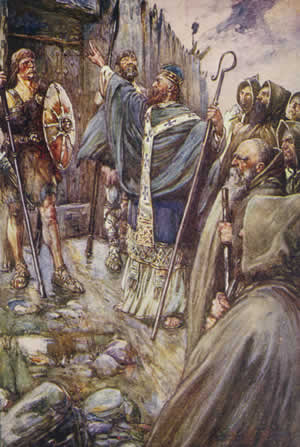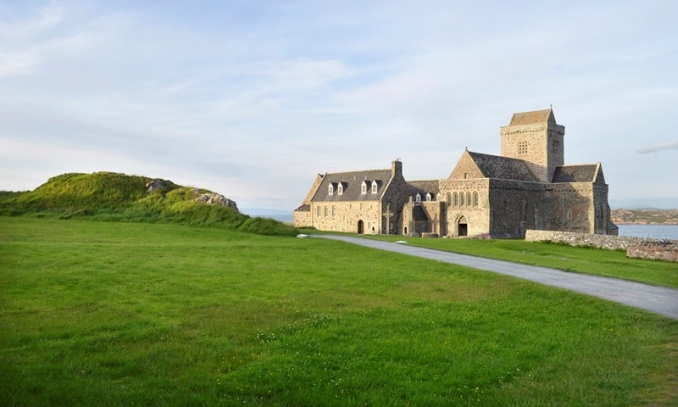Remains of wooden hut where Saint Columba studied and prayed identified
The remains of the wooden hut where Saint Columba was thought to have meditated and prayed on Iona have been dated to his lifetime. Saint Columba (Gaelic: Colm Cille) is credited with spreading Christianity in Scotland. He was the great-great-grandson of Niall Noígíallach, Irish high king who reigned in the late 4th and early 5 centuries, and ancestor of the Uí Néill family who were dominant in Ireland from the 6th to the 10th century. Saint Columba founded a monastery in 563 AD on Iona (Scottish Gaelic: Ì Chaluim Chille), an island in the Inner Hebrides (Na h-Eileanan a-staigh) off the west coast of the Scottish mainland.
The Abbot of Iona between 679–704 AD was Adomnán, a relative of Columba, He wrote Vita Columbae ("Life of Columba") about a century after the saint's death. In Adomnán’s account of St Columba’s life, he described him working in his wooden cell on a rocky hill on Iona. That hill is called Tòrr an Aba - "the mound of the abbot" and in 1957 the site was excavated by a team led by the Cornish historian and archaeologist Charles Thomas. The charred remains of a hut were found but the scientific means to accurately date them was not available at the time. Now, sixty years later, radiocarbon dating places the samples to the time that St Colomba was there almost 1,500 years ago. The evidence points to it being the wooden cell where he worked, prayed and spent his last day.
The discoverer of the remains, Charles Thomas, went on to become the first professor of Cornish studies at Exeter University and a Bard of the Cornish Gorseth. He believed that he had indeed found the remains of Columba's hut. He preserved the samples from the dig along with his notes and when he retired he stored them in his garage in Truro. Five years ago Prof Thomas gave the samples to a project led by University of Glasgow archaeologists Dr Ewan Campbell and Dr Adrián Maldonado, with a view to having them tested using the latest radiocarbon techniques. Now the hut remains have been dated to between the years 540 and 650, within the lifetime of Columba who died in 597. Sadly Charles Thomas died last year but his work and belief that he had indeed found the hut of Saint Columba has been vindicated.
Images: Columba preaching to the Picts by Joseph Ratcliffe Skelton 1865–1927. Iona Abbey picture from Historic Environment Scotland







